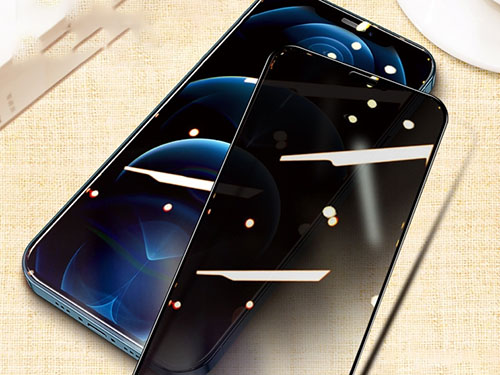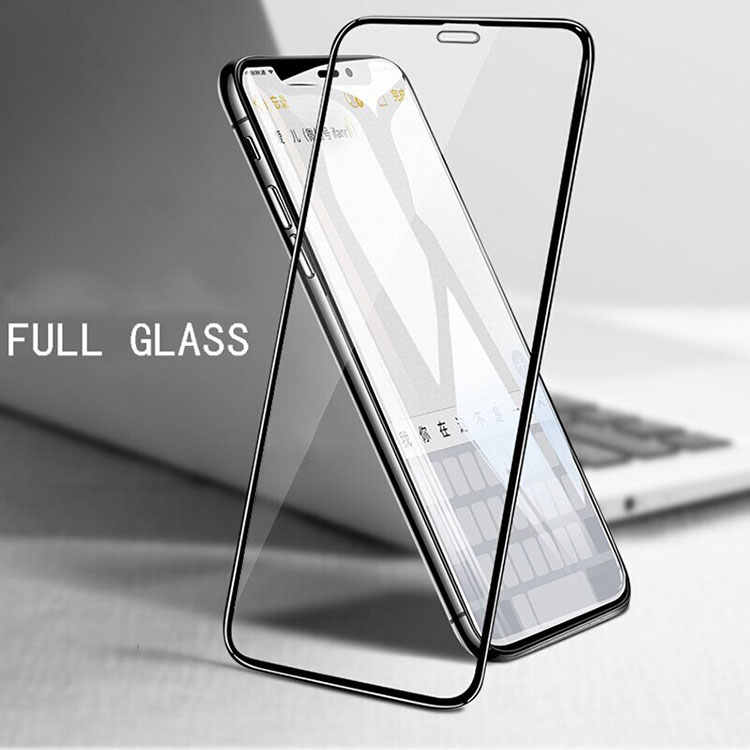04
2023-03
Production process of mobile phone screen protector
Production process of mobile phone screen protector
The small glass phone screen protector of the screen protector is already an essential accessory for mobile phone users all over the world. I believe you are familiar with it. Let me take a look at the core features of a good mobile phone screen protector.
Common screen protector raw materials can be divided into soda lime glass and aluminosilicate glass. Soda-lime glass is mainly composed of silica, calcium oxide and sodium oxide, and is often used in flat glass, bottles, glass jars, light bulbs and other products. Early screen protector products used soda-lime glass, but with the development of technology and the increase in user demand for hardness and strength, high-quality screen protectors use high-alumina silica glass.
Aluminosilicate glass has a high content of alumina and silica, which has good chemical stability, electrical insulation, mechanical strength and low thermal expansion coefficient. It is generally used in native touch screens of mobile phones, windshields in airplanes and high-speed rail cockpits Glass and other high-end glass scenes. Screen protectors using aluminosilicate glass have far surpassed soda-lime glass in terms of raw material performance and become the most popular product in the market. However, the cost of aluminosilicate glass is higher than that of soda-lime glass, and screen protectors using aluminosilicate glass retail The price will naturally be higher.

Since it is a screen protector, the raw material must be tempered to form tempered glass. The process is to heat the glass to a temperature close to the softening point within a precise time period, and then cool it quickly and uniformly. After tempering, uniform compressive stress is formed on the surface of the glass, while tensile stress is formed inside, which improves the bending and impact strength of the glass.
For the quenching time of glass, soda-lime glass and aluminosilicate glass are completely different. The tempering time of a good tempered glass must be based on the glass manufacturer's laboratory indicators, not as long as possible.
The edge technology of the screen protector is a direct factor that affects the feel. An excellent full-screen screen protector not only ensures the hardness of the glass surface, but also carefully handles the edge of the glass. Usually, hot bending or dispensing and etching processes are used to form a certain curvature on the edge. After such a phone screen protector is pasted, the overall feel is very good, and there will be no feeling of scratching hands. For those half-screen phone screen protectors, since the edge will not touch the hand, there is no natural difference in hand feeling, but the light refraction caused by the edge of the glass will cause white edges to seriously affect the visual experience.
In order to increase the water repellency, oil drainage, and antifouling capabilities of the glass surface, the screen protector will be coated with a layer of fingerprint oil. Fingerprint oil is a fluorine-containing coating with extremely low surface tension. It is generally called perfluoropolyether. Friends who are interested in this term can Baidu.
The polymer coating wears off over time with use, which is why our new membranes are smooth to use and feel a little different over time. Excellent diaphragms will work hard on the coating process. The choice of coating materials and processes, and the uniformity of the coating are all important factors that determine the hand feel. Usually, in order to test the performance of fingerprint oil, manufacturers will use some metal wool on the diaphragm. The surface is rubbed back and forth thousands to tens of thousands of times to simulate the result of long-term touch by human hands, and then water droplets are used to detect how much the surface smoothness of the diaphragm has decreased, so as to evaluate the smoothness of the diaphragm. The excellent coating still maintains a water drop angle of 115 degrees after more than 3000 frictions.
The screen protector is attached to the screen mainly by AB glue, which is the sticky side of the screen protector. The high-quality screen protector exhausts quickly when it is attached. As long as the position is aligned, the phone screen protector will be automatically attached from one side when the hand is released. This process does not need to be pressed by hand.

The screen protector needs to be cleaned to fit the screen. If the cleaning is not thorough, the bonding surface will be partially propped up, forming what everyone calls air bubbles, but the worst thing compared to incomplete cleaning is that at the moment you fit, there is The new floating dust falls on the screen, so after cleaning, you must use dust removal stickers to paste the screen repeatedly to eliminate dust and static electricity and prevent dust from attracting. In this case, an excellent screen protector can remove the phone screen protector and use a dust-removing sticker to stick off the dust, including foreign objects on the rubber surface of the phone screen protector, and then reattach it.
To sum up, the real screen protector is by no means a simple piece of glass. It can save the life of the screen at a critical moment of the mobile phone. This is its ultimate value, and behind this ability is the precise combination of materials and craftsmanship. Mobile phones are so expensive, it is the attitude of ordinary people to cherish a little.
Contact With Us
If you are willing to cooperate with us, you can contact us by leaving a message below.We will contact you as soon as we receive the information!
Contact information
sales04@weaddu.com
Phone number
+8619902626141
Tel
+86-0769-22820683
Address
Building 1, No. 20, Caotang Road, Gedi Community, Nancheng District, Dongguan City, Guangdong Province, China
